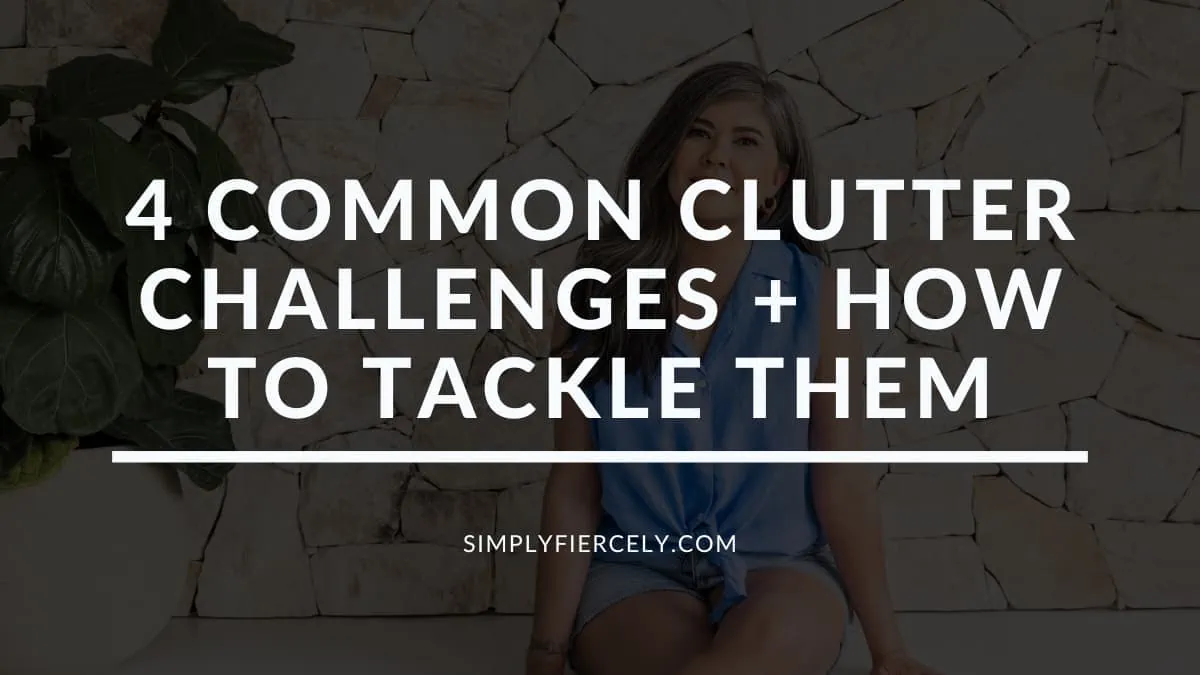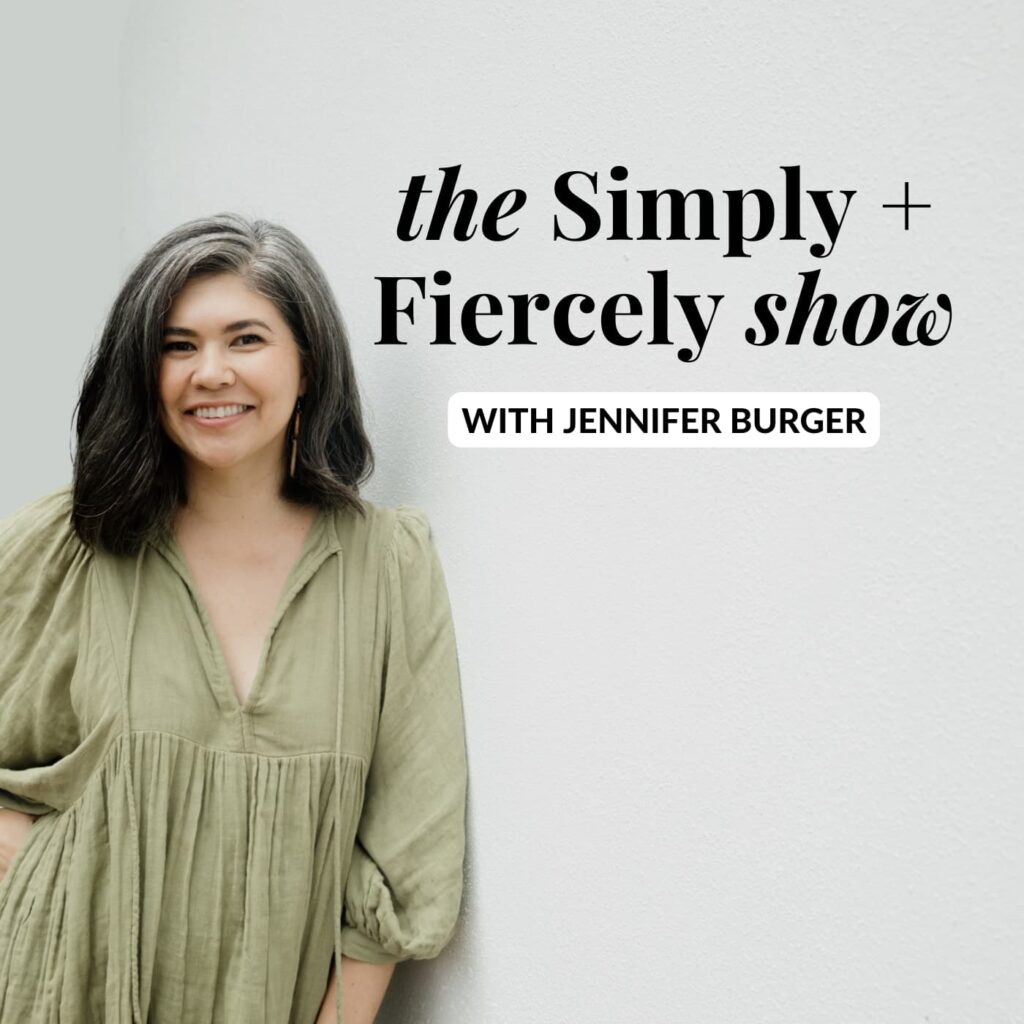Different types of clutter require different strategies. Keep reading for tips and advice that will help you overcome your biggest decluttering challenges!
Not all clutter is created equal, and I learned that firsthand.
Decluttering my old school reports felt nothing like tackling the junk drawer, and neither experience compared with decluttering my daughter’s baby clothes. The emotional rollercoaster was unique for each and not surprisingly, so was my approach to decluttering.
I’ve identified four common types of clutter challenges and have tips and techniques to help you tackle each. Let’s dive in!
This post contains affiliate links, which means I recommend products and make a small commission on purchases at no additional cost to you. Click here for the full disclosure statement.
Challenge #1: “Just in Case” Clutter
“But what if I need it someday?” is one of the most common fears people have about decluttering—and for good reason!
Time, money and energy are limited resources, which means no one wants to give something up only to replace it later. And, of course, there’s the environmental and societal impact to consider.
All this adds up to a sticky decluttering situation, but here’s a tip to make the process easier.
Calculate the true cost of keeping your clutter.
Let’s break this down:
When asked about the cost of decluttering, most people focus on the financial. (If I get rid of this and need it later, it will cost me $30 to replace it.)
This is a valid concern. I’m not a fan of wasting money, and not everyone has that luxury. You have to weigh the pros and cons of decluttering and then make a choice that aligns with your values, priorities and circumstances.
But before you decide, it’s worth checking in with the ‘hidden’ costs of clutter by asking yourself the following questions:
- Do you spend time cleaning or shuffling your items around?
- What about the financial cost—are you paying for storage or maintenance?
- Is there an emotional cost to keeping your item? (The cost to your well-being is SO often overlooked!)
- And finally, what about the opportunity cost? What might you accomplish if you had more space in your home and life?
There’s no one correct answer — different people will need to keep more than others for a wide variety of reasons. But exploring the hidden trade-offs will help you make an informed decision and find the sweet spot that’s right for you.
Pro tip: People who struggle with “just in case” clutter often struggle with bargain clutter as well… aka things you’re not sure you need but buy anyway because of the price. If this resonates, here are some tips to help you stop buying stuff you don’t need.
Challenge #2: Identity Clutter
Identity clutter stems from confusion about who you are and who you think you should be.
Let’s use my life as an example. For many years, I kept an expensive black blazer that I purchased on a work trip. It was beautiful and well-made, but I never wore it for some unknown reason.
Still, I couldn’t let go—until I had my “ah-ha” moment.
I grew up believing that successful women wore expensive blazers, which is why it was so difficult for me to let go. Getting rid of mine was like admitting to myself that I was not a successful woman, and of course, I didn’t want to admit that to myself!
But here’s a trick that helped me tackle my identity clutter, and it can help you, too.
Think about the identity you want to embody (in this case, a successful woman) and re-write your beliefs to reflect your values.
Here are a few examples:
- A successful woman wears expensive clothes becomes a successful woman wears what she wants
- A good mum buys her kids lots of toys becomes a good mum gives her kids her full attention
- A creative person owns a lot of craft supplies becomes a creative person makes art
This is subjective, and there’s no one correct answer! You might disagree with my perspective, but that‘s the point. Thinking intentionally about who you are and what you believe will help you edit your possessions to reflect these beliefs.
One of the most common types of identity clutter is also known as fantasy or aspirational clutter. This happens when we buy things to reflect the lifestyle we want, instead of the lifestyle we have.
Challenge #3: Sentimental Clutter
As a highly sensitive person, I know what it’s like to struggle with sentimental items, such as old photos, newspaper clippings, or your mother’s favourite blanket.
I also know that popular advice like “It’s just stuff” or “Your memories live in your heart, not your possessions” are well-meaning but not very helpful—because it’s one thing to know, logically, that you should let go. But to feel ready to give up your special items is something else altogether.
Here’s a tip that helped me clear my most emotional clutter:
Put a name to your emotions, and use them as clues.
Let’s use the example of your mother’s favourite blanket. What comes to mind when you hold it?
- Do you feel guilty about not spending more time with your mother?
- Was your mother the person you turned to for emotional support?
- Are you nostalgic for the person you used to be when you were together?
In the words of Dr Susan David, author of Emotional Agility affiliate link, “Emotions are signposts that indicate what’s important to us.” They hint at the inner work you need to do to feel comfortable letting go, such as forgiving yourself or looking for new sources of emotional support.
And from experience, this is the key to removing your emotional attachment to stuff (and ultimately, letting go!).
Challenge #4: “But I love it!” Clutter
This type of clutter is rarely discussed, but I know from experience that many people need help with it.
If you’ve ever found yourself saying, “I have too much stuff, and I want to declutter, but it’s hard because I love everything,” this is your challenge! You love your physical things, but accept that too much is causing a problem.
The first step to tackling this is to recognise that there are two ways to approach this clutter problem.
If everything you own genuinely sparks joy, then taking a closer look at your values and priorities is a great start. You might love everything, but sometimes, we must give up great things we enjoy to make room for what truly matters most.
(Check out this article about how to declutter when you want to keep everything for more tips on how to tackle this!)
However, it’s also worth mentioning that sometimes, our “love“ for stuff is less about enjoying our items and more about self-preservation.
For example, a few years ago, I decided to celebrate my birthday by visiting a thrift store and left with a bag of clothes I adored.
Or so I thought …
Fast forward a few months, and I still hadn’t worn most of my new clothes, but I wasn’t concerned. Instead, I told myself, “I love everything! I just haven’t had a chance to wear it yet.”
This sounds reasonable and safe, which is why so many of us fall into this trap. But here’s the truth:
Deep down, I knew I’d made a mistake by buying these clothes (for various reasons—they were beautiful but not something I’d ever wear.) However, admitting this felt wrong or even shameful. After all, I’m a decluttering coach!
Instead of facing these hard feelings, I convinced myself that I “loved” my items because not having a chance to wear things feels safe. Making a mistake or wasting money on a regretful purchase does not.
Obviously, I can’t say which applies to you, but it is something to think about. In a sense, a lot of our hard to declutter items could be considered spiritual clutter, and it’s more about self-kindness and forgiveness than deciding what shoes we’ll wear someday.
The Simply + Fiercely Show is a podcast for women who want to clear their clutter and create space for freedom and joy. If your life keeps getting bigger—but not better—then it’s time to declutter from the inside out. LISTEN NOW
What About Other Types of Clutter?
So far, I’ve focused on the emotional challenges of clutter because years of experience have taught me that this is the most important thing to work on.
There are some specific techniques that will help you tackle other types of clutter, including digital clutter, paper clutter, surface clutter, etc. (and I’ll probably write more about those one day!).
But for now, I know these kinds of clutter challenges trickle down into all other areas. Practising these new ways of thinking makes it easier to declutter everything else.
?If you enjoyed this post, please check out these popular decluttering articles:
21 Minimalist Tips For Decluttering That Work – This is a roundup of my top decluttering tips! In this post, learn how to tackle your hardest clutter with ease.
A Powerful Decluttering Hack No One Talks About — This is my favourite decluttering ”hack” and it will transform the way you look at decluttering (and it feels good, too!).
Why Clutter Clearing Can Feel Impossible + What To Do About It — I spent years trying to declutter my home, which sometimes felt impossible. But here’s the good news: after making a few shifts, I went on to declutter over 80% of my belongings, and I’m sharing some of my best tips in this post!
5 Decluttering Methods You Haven’t Tried (That Really Work!) —The Snowball Method is one of my favourite ways to clear a lot of clutter in little time. Learn about it and other proven methods to help you create space in your home and life.

